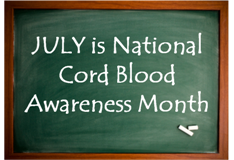July is Cord Blood Awareness Month, and cord blood banks will encourage the public to learn more about cord blood and cord blood banking. Hospitals around the world will have brochures and pamphlets on-hand throughout July to explain the potential benefits of cord blood stem cells. Medical journals and magazines will also write featured posts about cord blood, such as the Q & A between Insception Lifebank, and ‘Masalamommas’ online magazine.
Cord blood is the blood left over in the placenta and the umbilical cord following the birth of a baby. Doctors learned that cord blood is a rich source of viable stem cells that have the potential to treat a variety of diseases, including leukemia, heart disease, cerebral palsy, and dozens of others. Cord blood is collected within minutes of the birth of a newborn and transferred to a pre-determined cord blood bank.
After the sample of cord blood arrives at the cord blood bank, the cord blood stem cells are processed and frozen over the long term in liquid nitrogen storage tanks. According to the latest medical research, cord blood stem cells are useable for up to 24 years after storage.
Once the sample is in storage at the cord blood bank, families can make use of the cord blood stem cells at any time in their child’s life should the need ever arise. Cord blood stem cells are a perfect match to the child from whom they were collected, and there is no risk that they will be rejected.
Cord blood has the possibility to benefit the entire family, and can offer a lifetime of potential benefits. As the world prepares for Cord Blood Awareness Month in July, Insception Lifebank will offer more informative posts and engagements to raise awareness for cord blood banking. Families can also consult their local hospitals to learn more about cord blood, and how to make a potentially life-changing decision.
 Sign in
Sign in 


